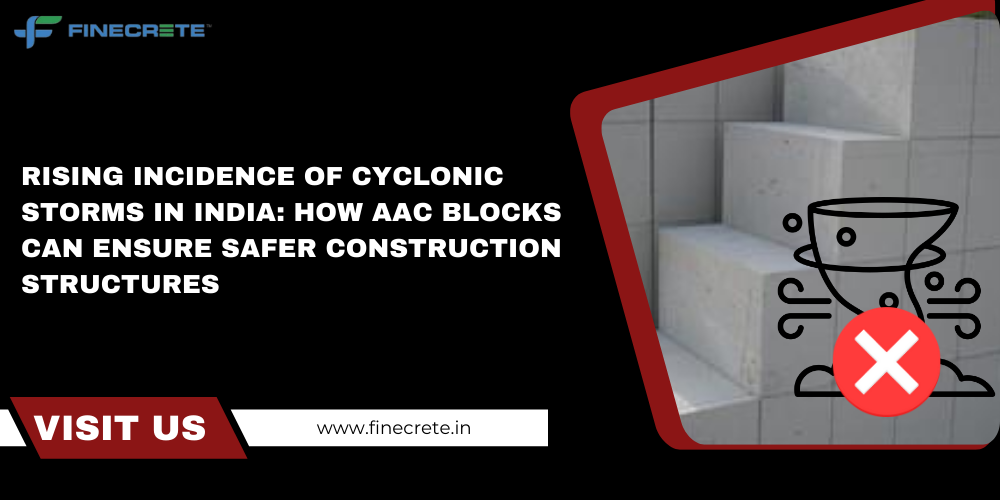First monitored on October 20, the recent severe cyclonic storm Dana is wreaking havoc across the states of West Bengal and Odisha in India. As climate change continues to alter weather patterns, India is witnessing an alarming rise in the frequency and intensity of cyclonic storms. This demands a re-evaluation of construction practices, especially in regions prone to such natural disasters. Autoclaved Aerated Concrete (AAC) blocks can be a promising solution for building resilient structures. Find out why these can help build safer construction structures in the wake of rising cyclonic activities across the country.
Lightweight and high-strength
Unlike traditional building materials, AAC blocks are about one-fifth the weight of conventional concrete blocks. These boast of high structural integrity. Light in weight, these can reduce the overall load on building foundations, making them less susceptible to damage from strong winds and heavy rains associated with cyclonic storms.
Structures built with AAC blocks can better withstand the forces exerted by severe weather, ensuring greater safety for occupants.
Better resilience to wind forces
Buildings constructed with AAC blocks are less likely to suffer from wind-induced damage, offering peace of mind to those living in cyclone-prone areas.
The unique cellular structure of the blocks allows them to absorb and dissipate energy more effectively than traditional materials. It helps reduce the risk of structural failure during storms, ensuring a more secure environment for residents.
Moisture resistance
Cyclonic storms often bring torrential rains, leading to significant water exposure for buildings. AAC blocks are known for their moisture-resistant properties, which help prevent water ingress and dampness within structures.
This resistance is crucial in maintaining the integrity of the building and preventing mold growth, which can compromise both the structure and the health of its occupants. Builders can ensure that homes and facilities remain dry and safe, even in the aftermath of severe storms.
Fire Resistance
Cyclonic storms can also lead to hazardous situations involving fire. Debris and fallen power lines can ignite fires, posing a significant risk to buildings and their inhabitants.
AAC blocks are inherently fire-resistant, offering an additional layer of protection during and after a storm. Due to this quality, structures built with AAC blocks can resist fire hazards better, safeguarding the lives and property of residents in cyclonic areas.
Seismic resilience
Many regions in India, particularly along the eastern coast, are susceptible to seismic activity in addition to cyclonic storms. AAC blocks offer excellent seismic performance due to their lightweight nature and superior structural properties.
When combined with appropriate design and engineering practices, structures made with AAC blocks can effectively withstand not only the forces of cyclonic winds but also the shaking associated with earthquakes. Due to this dual resilience, AAC blocks can be a smart choice for construction in areas prone to multiple natural disasters.
As India faces an increasing number of severe cyclonic storms like Dana, the need for resilient construction becomes more critical than ever. AAC blocks can help create safer structures that stand up to the challenges posed by climate change and natural disasters. Using these construction materials in building practices can help protect lives, homes, and the environment in the years to come.






